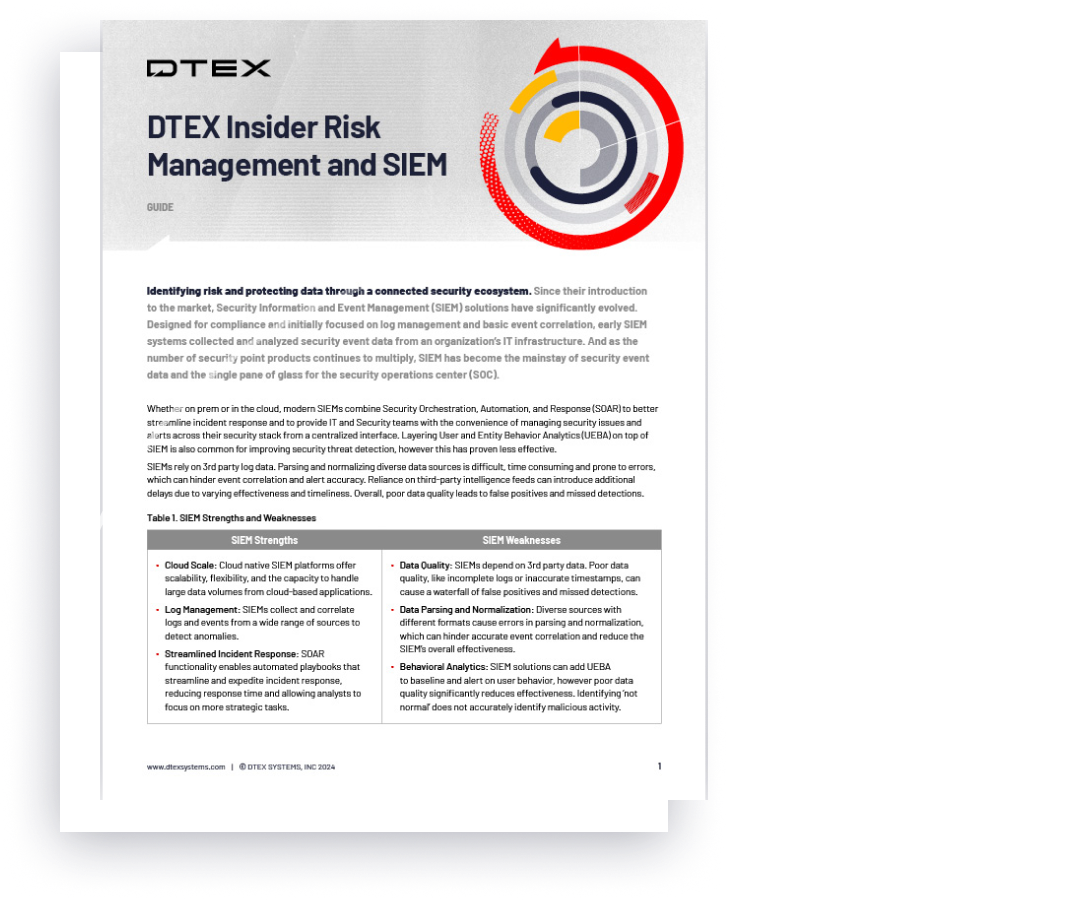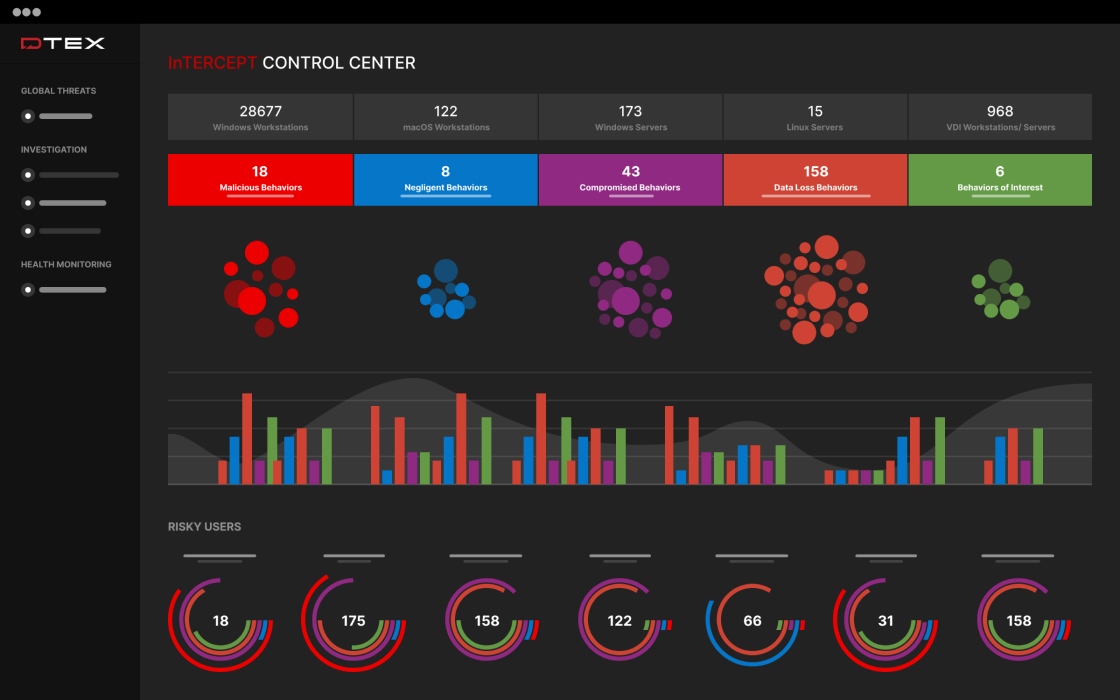Strategic Integration Partners
DTEX Insider Risk Management and SIEM
Together, DTEX and SIEM solutions create a more effective security foundation, improving overall threat detection and response and enabling organizations to stay ahead of insider threats.

Ready to get started?







